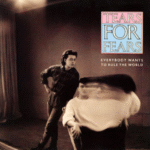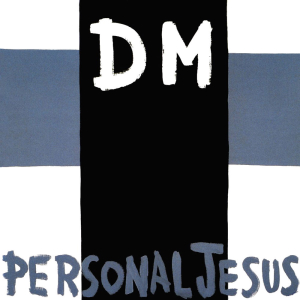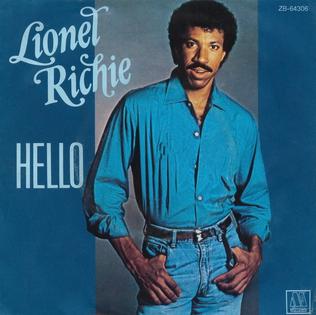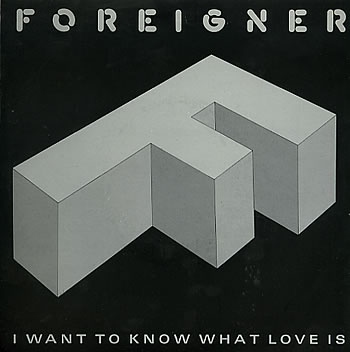 Tears for Fears’ “Everybody Wants to Rule the World,” released in 1985 on their landmark album Songs from the Big Chair, stands as one of the most iconic tracks of the 1980s, blending irresistibly catchy pop sensibilities with darkly introspective themes. From its opening guitar riff to its soaring chorus, the song presents a meditation on power, ambition, and human desire, all wrapped in a sleek, polished production that epitomizes the era while transcending it. Roland Orzabal and Curt Smith, the duo behind Tears for Fears, crafted a track that is at once accessible, deeply resonant, and hauntingly prescient, combining infectious melodies with lyrical sophistication that continues to engage audiences decades later. The song’s enduring popularity, pervasive cultural presence, and ability to resonate with both casual listeners and thoughtful critics underscore its status as a definitive work of 1980s pop-rock, a piece of music that continues to be interpreted, celebrated, and relevant across generations.
Tears for Fears’ “Everybody Wants to Rule the World,” released in 1985 on their landmark album Songs from the Big Chair, stands as one of the most iconic tracks of the 1980s, blending irresistibly catchy pop sensibilities with darkly introspective themes. From its opening guitar riff to its soaring chorus, the song presents a meditation on power, ambition, and human desire, all wrapped in a sleek, polished production that epitomizes the era while transcending it. Roland Orzabal and Curt Smith, the duo behind Tears for Fears, crafted a track that is at once accessible, deeply resonant, and hauntingly prescient, combining infectious melodies with lyrical sophistication that continues to engage audiences decades later. The song’s enduring popularity, pervasive cultural presence, and ability to resonate with both casual listeners and thoughtful critics underscore its status as a definitive work of 1980s pop-rock, a piece of music that continues to be interpreted, celebrated, and relevant across generations.
Musically, “Everybody Wants to Rule the World” exemplifies the careful balance between pop accessibility and emotional depth that characterized much of Tears for Fears’ work. The track opens with a gently strummed, slightly syncopated guitar riff that immediately establishes a sense of tension and motion. Layered keyboards and bass gradually enter, building texture without overwhelming the clarity of the primary melodic line. The rhythm section, precise yet understated, maintains a steady, driving groove that propels the song forward while leaving space for the vocals to shine. The instrumentation is simultaneously lush and restrained, achieving a timeless quality that has allowed the song to endure long past the decade of its release.
Roland Orzabal’s vocal delivery is a key element in the song’s lasting impact. His voice carries both urgency and detachment, embodying the tension inherent in the lyrics while remaining approachable and engaging for the listener. Orzabal employs a measured phrasing, emphasizing key words and moments to create dramatic weight without resorting to melodrama. The vocal tone is simultaneously introspective and declarative, reflecting the dual nature of the song’s narrative: a meditation on the desire for control and dominance, paired with an acknowledgment of human vulnerability and uncertainty. The interplay between vocal expression and instrumental texture gives the track a sense of dynamic balance, ensuring that the emotional resonance is heightened without sacrificing musical coherence.
Lyrically, “Everybody Wants to Rule the World” explores themes that are both universal and historically situated. The song opens with lines that immediately establish a sense of urgency and inevitability, evoking the pressures and contradictions of human ambition. The lyrics examine the tension between individual desire and collective consequence, portraying power as an alluring yet inherently unstable pursuit. Orzabal and Smith reflect on the paradoxical nature of control: the simultaneous fascination with authority and the recognition of its potential dangers. Lines such as “Help me make the most of freedom and of pleasure / Nothing ever lasts forever” suggest both a yearning for fulfillment and an awareness of impermanence, creating a thematic complexity that distinguishes the song from more conventional pop fare.
The chorus, with its declarative statement “Everybody wants to rule the world,” functions as both an observation and a cautionary refrain. Its simplicity masks a profound insight into human nature, presenting power and ambition as universal desires while highlighting the potential consequences of their pursuit. The melody of the chorus is expansive and anthemic, contrasting with the more subdued verses to create a sense of release and emotional resonance. This structural interplay between verse and chorus enhances the song’s narrative arc, allowing listeners to engage with both the lyrical content and the emotional experience of the music. The chorus has become instantly recognizable, a phrase that has transcended the song to enter broader cultural discourse, appearing in films, television, and popular references as shorthand for ambition, conflict, and human aspiration.
The production of “Everybody Wants to Rule the World” is a masterclass in 1980s recording techniques, balancing the era’s signature lushness with clarity and restraint. Producer Chris Hughes crafted a sound that is spacious yet cohesive, allowing each element of the arrangement to breathe while contributing to a unified sonic experience. Synthesizers provide texture and harmonic depth without overwhelming the melodic focus, while the rhythm section maintains a steady pulse that underpins the track’s forward momentum. The guitar work, both rhythmic and melodic, punctuates key moments, reinforcing the song’s emotional narrative. The mix emphasizes both detail and balance, ensuring that the song is as engaging on first listen as it is under repeated scrutiny.
One of the song’s most notable features is its thematic ambivalence. While the lyrics discuss ambition, power, and the human desire to control, the musical delivery simultaneously conveys melancholy, reflection, and uncertainty. This duality creates a tension between message and medium, allowing listeners to experience the exhilaration of the melody while contemplating the sobering implications of the words. The song thus functions on multiple levels: as a pop anthem, as a reflective commentary on ambition and power, and as a broader meditation on human behavior. This complexity has contributed to the song’s enduring relevance, as listeners continue to find new layers of meaning in both lyrics and performance.
The bridge of the song, with its subtle instrumental shifts and reflective lyrical content, provides a moment of introspection amidst the driving momentum of the verses and choruses. Here, the arrangement strips back slightly, emphasizing keyboards and atmospheric sounds, allowing Orzabal’s vocals to occupy center stage. This contrast heightens the song’s dynamic range and emotional impact, demonstrating Tears for Fears’ mastery of musical pacing and narrative tension. The bridge functions as both a musical and thematic pivot, reinforcing the song’s exploration of vulnerability and human impermanence before returning to the declarative force of the chorus.
Culturally, “Everybody Wants to Rule the World” has had an enduring impact, both as a reflection of its time and as a timeless commentary on human ambition. Released in the mid-1980s, the song captured a moment of global tension, economic transformation, and social change, resonating with listeners who recognized the pressures and contradictions of the era. Its lyrical references, while often abstract, evoke the anxieties and desires that define both personal and political spheres. The track’s ability to engage with such broad themes while remaining immediately accessible and musically compelling is a testament to the skill of Orzabal, Smith, and Hughes in crafting a song that transcends its era while remaining grounded in the concerns of its time.
The song’s instrumentation also contributes to its thematic depth. The rhythm section, anchored by a subtle but driving bassline and understated percussion, maintains a sense of momentum and inevitability, echoing the inexorable nature of human ambition. Guitars provide both rhythmic support and melodic counterpoint, while synthesizers create a spacious, reflective atmosphere. This layering of musical elements mirrors the lyrical content, reinforcing the tension between aspiration and reflection, power and vulnerability. Each instrumental layer is carefully placed, contributing to the song’s sense of cohesion and enhancing the listener’s engagement with both melody and narrative.
Live performances of “Everybody Wants to Rule the World” further underscore its enduring appeal and versatility. Tears for Fears’ live renditions often emphasize the song’s anthemic qualities, with dynamic shifts, extended instrumental sections, and audience participation highlighting the track’s emotional and musical impact. The song’s combination of lyrical insight and melodic accessibility allows it to resonate in diverse live settings, from intimate venues to large arenas, demonstrating its adaptability and universal appeal. These performances reinforce the song’s status as a cornerstone of Tears for Fears’ catalog and as a defining work of 1980s pop-rock.
The song’s enduring popularity is also reflected in its frequent use in popular culture. From film and television soundtracks to commercials and covers by other artists, “Everybody Wants to Rule the World” has become a symbol of ambition, political intrigue, and human complexity. Its memorable melody and resonant lyrics ensure that it is instantly recognizable, while its thematic richness provides ongoing interpretive possibilities. The track’s continued relevance highlights its ability to speak to universal human experiences, bridging generational and cultural divides with ease.
An analysis of the song’s musical structure reveals its meticulous construction. The verses are relatively subdued, emphasizing narrative and melodic clarity, while the choruses expand dynamically to create emotional release. The bridge provides contrast, enhancing the song’s pacing and reinforcing its thematic concerns. Harmonically, the song employs subtle shifts and tensions that complement the lyrical content, creating a sense of movement and narrative development. Each musical element is carefully calibrated to support both melody and message, resulting in a track that is cohesive, compelling, and emotionally resonant.
The interplay between lyrics and music in “Everybody Wants to Rule the World” also demonstrates Tears for Fears’ mastery of musical storytelling. The song’s themes of ambition, power, and human desire are reinforced by the dynamics, instrumentation, and melodic contour, creating a listening experience that is immersive and multifaceted. Listeners are drawn into the narrative not only through the words but through the musical context, which amplifies emotional resonance and deepens engagement. This synthesis of lyrical and musical elements is a key factor in the song’s enduring status as both a pop classic and a work of artistic depth.
Moreover, the song’s themes remain relevant decades after its release. Ambition, power, political intrigue, and human desire are timeless concerns, and the song’s nuanced exploration of these themes ensures that it continues to resonate with new generations of listeners. Whether interpreted as a commentary on personal ambition, societal structures, or global dynamics, “Everybody Wants to Rule the World” maintains a universality that transcends its original historical context. Its continued presence in media, cover versions, and cultural references testifies to its lasting relevance and interpretive flexibility.
In conclusion, Tears for Fears’ “Everybody Wants to Rule the World” is a landmark achievement in popular music, combining infectious melody, sophisticated production, and profound lyrical insight. Its careful balance of accessibility and thematic depth allows it to function as both a pop anthem and a reflective meditation on power, desire, and human complexity. The song’s enduring impact, demonstrated through its cultural presence, continued popularity, and ongoing reinterpretation, underscores its significance as a work that transcends its era while remaining firmly rooted in the concerns and sensibilities of its time. From the first guitar riff to the final chorus, “Everybody Wants to Rule the World” exemplifies the power of pop music to engage, inspire, and provoke thought, securing Tears for Fears’ legacy as one of the most innovative and insightful bands of the 1980s. Its blend of melodic brilliance, lyrical sophistication, and cultural resonance ensures that it will remain a defining anthem of human ambition, reflection, and the timeless interplay between desire and consequence.


